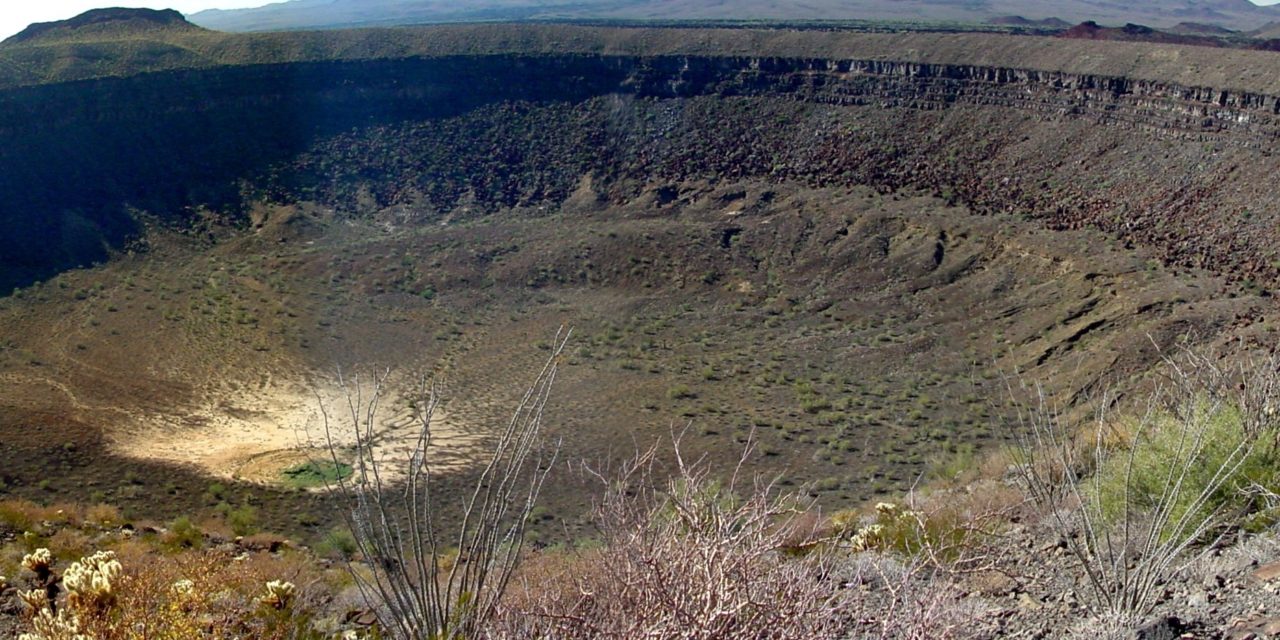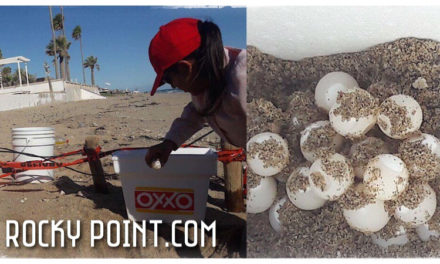Pinacate Biosphere Reserve offers information at it’s new store.
One block off of Rocky Point’s Malecon is a new gateway to the Pinacte Biosphere Reserve. Located across from the old church, and close to Thrifty Ice Cream, is a store containing articles and information about the Pinacate, a World Heritage site.
Ready to hand you a flyer, a staff member can answer questions about the reserve, weather in English or Spanish. The small shop contains guide books, t-shirts, hats and more. Proceeds from all of it go to help support wild life protection in the Reserve.
Did you know you can camp in the Pinacate? And that there is trail made for mountain bikes as well? The store is a great place to gather info for a future trip.
. . . . . . . . . . . . . . . . . . . .
The Pinacate
Made up of over 600 square miles of lava fields and sand dunes, the Pinacate Biosphere Reserve reaches from near the U.S. border to the Sea of Cortez. This World Heritage site preserves one of the harshest and most solitary wilderness areas in the world.
The Reserve is made up of two distinct portions of the Sonoran Desert. To the west are the dunes. Winds crossing the mouth of the Colorado River Delta pick up particles of the mud that has eroded in places like the Grand Canyon up north. Grain by grain, the blowing dust has built the Sahara like Desierto de Altar, the largest area of dunes in North America. Mountains of sand, the dunes move with the wind. Like slow motion waves on the nearby ocean.
To the east, sand gives way to jagged black rock. The result of violent geologic activity, the heart of the Pinacate is a landscape of lava flows and giant craters. Inaccesible and very dry, this area is home to most of the wildlife that lives in the Pinacate. Bighorn sheep, Pronghorn Antelope, and desert tortoise are some of the species found here.
Cholla cactus, creosote and other common Sonoran desert plants are here, and are almost identical to ones found in Organ Pipes National Monument just across the border. Set against the black earth, everything has a distinct and unusual look. Springtime can see huge fields of colorful wildflowers. It is a place that is supremely photogenic.
Less evident is the mark left by the peoples who lived here.
Populated since the time of the glaciers, historically this area is home to the O´Ohdam. Life was centered around the Tinajas, or water holes that caught sporadic rain fall at the bass of the mountains. Ranging down to the Sea of Cortez, the O´Ohdam followed the resources available to survive in this harsh world. The aptly named Camino del Diablio is a scratch across the desert, marking where later travellers out of Spanish Mexico made their way to California and the West Coast.
While access to the Reserve is controlled, it is not difficult to experience this wild landscape. An access road a few kilometers north of Rocky Point takes you to the Schuk Toak Visitors Center. Exhibits about the Pinacates’ natural and human history can be found. Speak with an expert, or head out to the interperative trail. A short drive past the center, over ancient lava flows (suitable for most vehicles) is the starting point for a moderate intro hike into the Dunes that leads you to a point with views to the ocean.
Spending more time in the Pinacates is possible. Registering at Schuk Toak first is reguired to access deeper into the desert wilderness. There are roads to tour by car, or to get to trailheads that lead to the top of the giant volcanic craters. Overnight camping is limited to specific areas.
With the recent World Heritage Site designation, local businesses that offer tours to the Pinacate have seen travellers from Asia and Europe start to make regular appearance. As time goes by, the Pinacates will continue grow as a world class destination for ecotourism.
New information center for Pinacate Reserve in the Old Port







